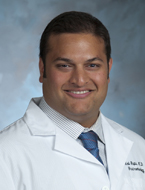Impact of a computer-based teaching module on characterization of diminutive colon polyps by using narrow-band imaging by non-experts in academic and community practice: a video-based study Journal Article
Local Library Link: Find It @ Loyola
| Authors: | Rastogi, A; Rao, D. S.; Gupta, N; Grisolano, S. W.; Buckles, D. C.; Sidorenko, E.; Bonino, J.; Matsuda, T.; Dekker, E; Kaltenbach, T.; Singh, R.; Wani, S; Sharma, P; Olyaee, M. S.; Bansal, A; East, J. E. |
| Article Title: | Impact of a computer-based teaching module on characterization of diminutive colon polyps by using narrow-band imaging by non-experts in academic and community practice: a video-based study |
| Abstract: | BACKGROUND: Experts can accurately characterize the histology of diminutive polyps with narrow-band imaging (NBI). There are limited data on the performance of non-experts. OBJECTIVE: To assess the impact of a computer-based teaching module on the accuracy of predicting polyp histology with NBI by non-experts (in academics and community practice) by using video clips. DESIGN: Prospective, observational study. SETTING: Academic and community practice. PARTICIPANTS: A total of 15 gastroenterologists participated-5 experts in NBI, 5 non-experts in academic practice, and 5 non-experts in community practice. INTERVENTION: Participants reviewed a 20-minute, computer-based teaching module outlining the different NBI features for hyperplastic and adenomatous polyps. MAIN OUTCOME MEASUREMENTS: Performance characteristics in characterizing the histology of diminutive polyps with NBI by using short video clips before (pretest) and after (posttest) reviewing the teaching module. RESULTS: Non-experts in academic practice showed a significant improvement in the sensitivity (54% vs 79%; P .001), accuracy (64% vs 81%; P .001), and proportion of high-confidence diagnoses (49% vs 69%; P .001) in the posttest. Non-experts in community practice had significantly higher sensitivity (58% vs 75%; P = .004), specificity (76% vs 90%; P = .04), accuracy (64% vs 81%; P .001), and proportion of high-confidence diagnoses (49% vs 72%; P .001) in the posttest. Performance of experts in NBI was significantly better than non-experts in both academic and community practice. LIMITATIONS: Selection bias in selecting good quality videos. Performance not assessed during live colonoscopy. CONCLUSION: Academic and community gastroenterologists without prior experience in NBI can achieve significant improvements in characterizing diminutive polyp histology after a brief computer-based training. The durability of these results and applicability in everyday practice are uncertain. |
| Journal Title: | Gastrointestinal endoscopy |
| Volume: | 79 |
| Issue: | 3 |
| ISSN: | 1097-6779; 0016-5107 |
| Publisher: | Mosby, Inc |
| Journal Place: | United States |
| Date Published: | 2014 |
| Start Page: | 390 |
| End Page: | 398 |
| Language: | eng |
| DOI/URL: | |
| Notes: | CI: Published by Mosby, Inc.; JID: 0010505; 2012/10/25 [received]; 2013/07/17 [accepted]; 2013/09/08 [aheadofprint]; ppublish |
LUC Authors
-
 83
83Gupta
Related LUC Article
